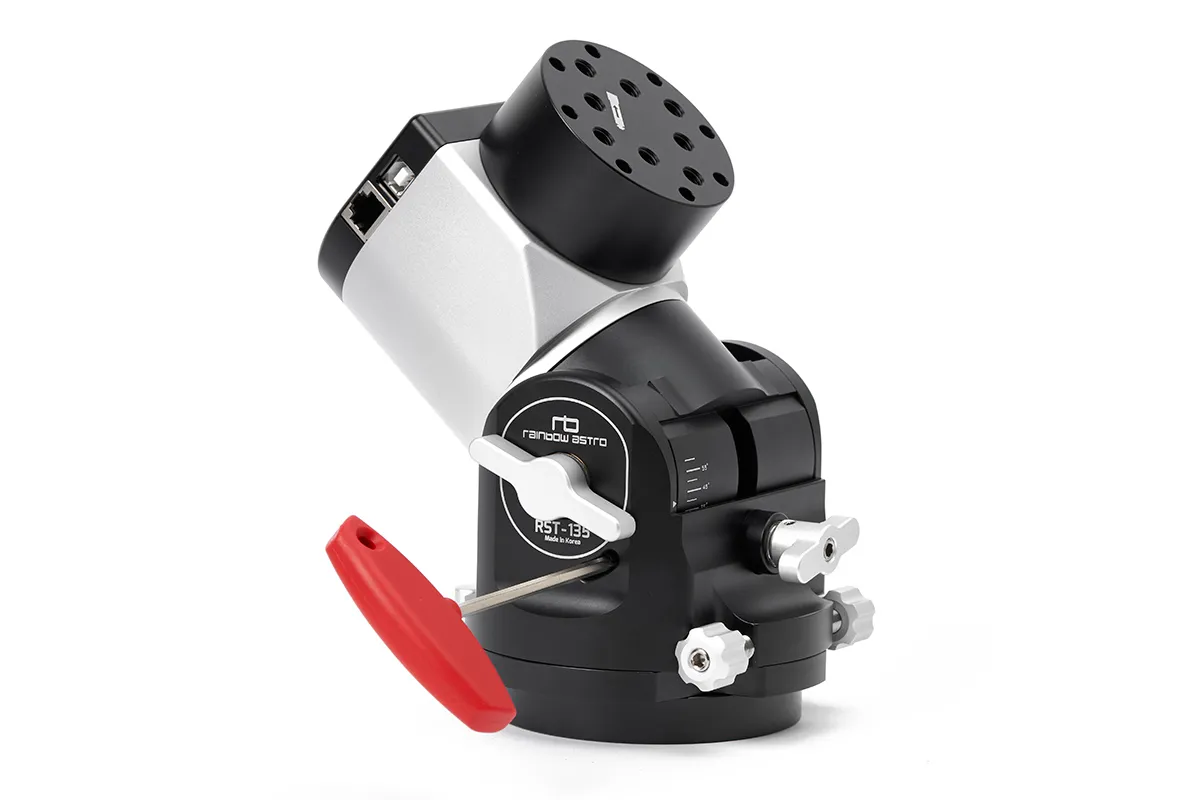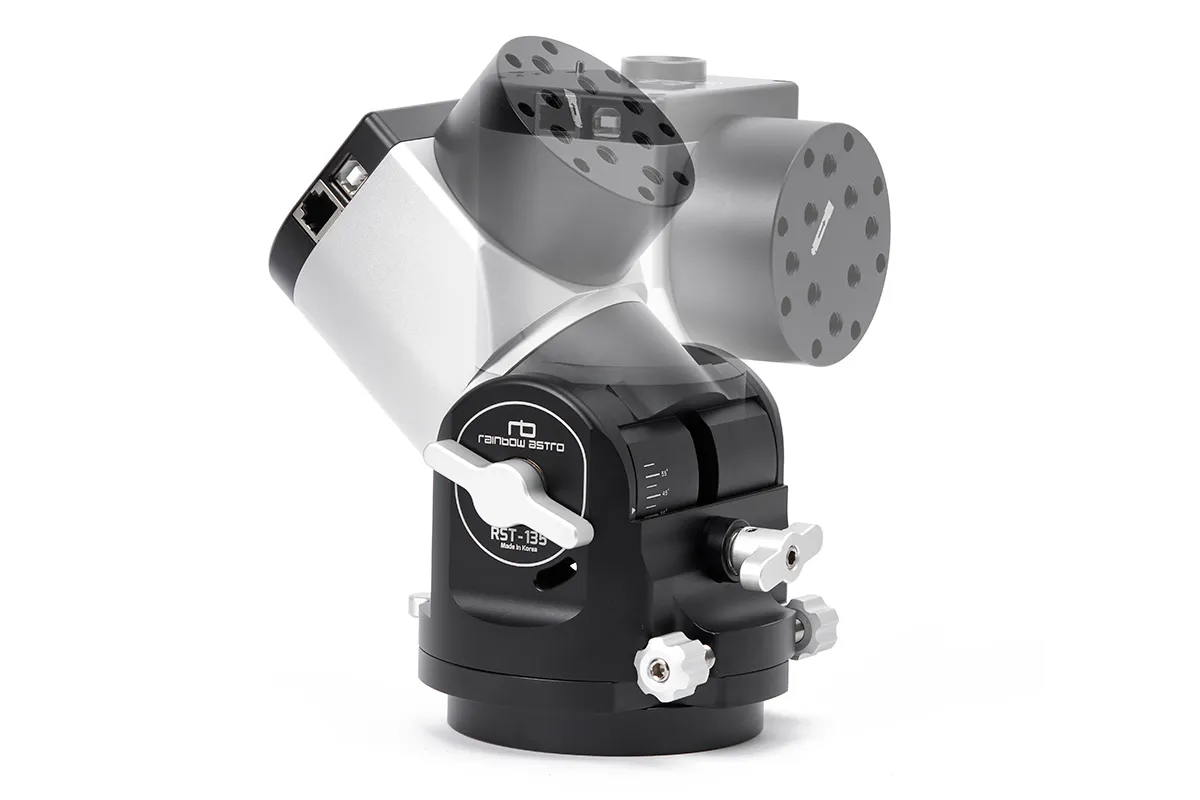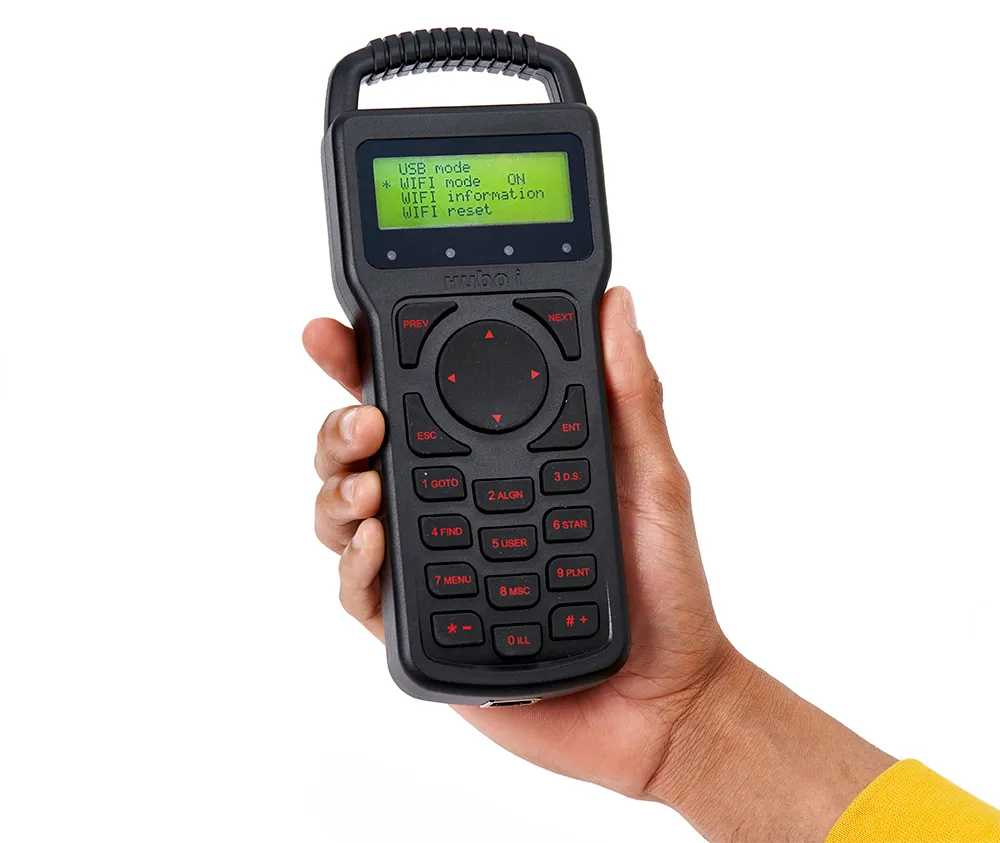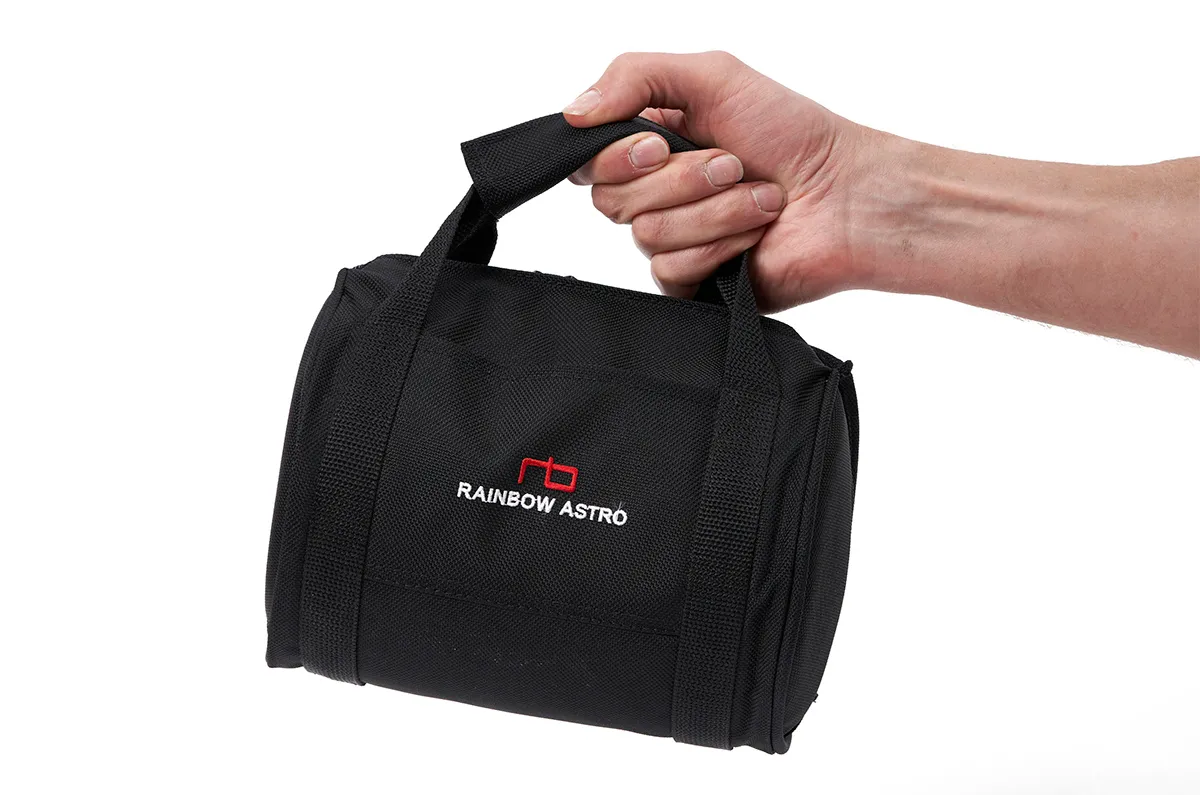At first glance you could be forgiven for thinking the diminutive RST-135 mount is another lightweight star-tracking accessory for cameras and small telescopes.
As indicated by the price point, however, there is a lot more to this mount than meets the eye: it is an extremely capable modern machine that offers a comprehensive range of abilities to a dedicated amateur astronomer.

It is worth pointing out that the RST-135 is not an out-of-the box solution as a telescope mount, and some consideration needs to be given for suitable accessories.
For instance, First Light Optics provided a Sightron carbon fibre tripod and an ADM Vixen-style saddle for the purposes of our review, but if we were buying the mount we would add a Rainbow Astro extension pier and a suitable 12–16V power supply to the package.
With the tripod securely attached to the mount head and the saddle bolted firmly in place, we attached our telescope, a 75mm refractor weighing around 3.5kg.

The RST-135 can be operated as both a traditional altaz–style mount, or with simple adjustment it turns into an equatorial mount.
We quickly discovered that we would not be able to just rely on our experience and set the mount and handset up without repeatedly referring to the extensive manual and user guide, which are available via download.
There is also a handy additional guide available on the First Light Optics website, written by an end user, which is very helpful for explaining some of the quirks and features that are unique to the RST-135.
We first configured the RST-135 in altaz mode, where the altitude of the mount is set to 90° by loosening a single hex bolt and the easy-to-operate altitude adjustment knobs.

The hand controller displays which mode the mount is programmed for on the front screen.
It seemed a shame, however, that this has a green light display, albeit dimmable, and that the mount itself has a flashing yellow and green LED, as these quickly became a bright nuisance once our eyes were dark adapted.
We would prefer to see muted red lights where lights are necessary.
That aside, once the mount was positioned properly as per the manual, and an alignment tweak onto a known star was made via the manual azimuth adjusters, it was easy and accurate to use.
It demonstrated a speedy slew speed without too much motor noise. We did a quick tour of some available objects from the Messier Catalogue that were comfortably located within the view of our wide-field eyepiece.

Swapping to equatorial mode, after a rough manual polar alignment, we located six known stars, added them as alignment stars, and then proceeded to slew to a variety of objects.
Note that accurate polar alignment can be carried out via the handset, or there is an attachment point for a PoleMaster camera.
Our 13mm eyepiece provided an easygoing 40x magnification, and without fail the RST-135 put the desired object in the centre of the view.
This accuracy gave us the confidence to try trickier objects that were not immediately visible without averted vision, or telescope tapping, although the mount and tripod were extremely stable and gently tapping the telescope had almost no effect.
At one point we left the telescope pointing at the star Arcturus (Alpha (α) Boötis), went away for over an hour, and returned to find the object held perfectly central in the eyepiece, a testament to the mount’s tracking accuracy.

By controlling the RST-135 via its USB port and dedicated ASCOM driver (ASCOM is an industry-standard interface that allows different pieces of astronomical equipment to communicate), we found the mount integrated seamlessly with our planetarium software, allowing point and click Go-To options.
We added a guide camera to the telescope, and the RST-135 was accurately auto-guided with the PHD2 telescope software for an extended period via the USB port, demonstrating that it would make an excellent candidate as a long-exposure astrophotography mount.
The RST-135 can also create its own Wi-Fi network, although we were unable to test this due to an intermittent connection.
First Light Optics was advised and it appears to be a one-off issue, with no other reports of such a problem by anyone else.
Overall, we feel that the novel RST-135 makes an exceptional portable mount, performing well for observers and astrophotographers alike.
Harmonic Drive

The mount is manufactured by an innovative Korean company called Rainbow Astro, which has taken the strain wave gear technology usually seen in robotics and applied it to telescope mounts.
Along with a solid build-quality from a CNC-machined single block, these Harmonic Drive motors are accurate and precise, and enable the RST-135, which itself weighs only 3.3kg, to handle telescopes and equipment up to 13.5kg without the need for a counterweight.
This ability is a game changer for portable mounts, removing the need to lug heavy steel counterweights around.
Some attention to the stability of the tripod and the positioning of the legs is still important, however, to avoid any imbalances or toppling.
Should you need it, the option to add a counterweight bar and weights also remains, which adds further to the appeal of the RST-135 as a single-mount option for astronomers with a range of telescopes, as this has the effect of increasing the capacity of the mount to a hefty 18kg payload.

Rainbow Astro RST-135 mount: 5 best features
1
Soft shell case
With portability being a key feature of the lightweight RST-135, it is supplied with a clamshell-style padded bag that holds the mount head securely and safely in an easily handled package. Being able to transport such capable equipment to dark or remote sites easily is very appealing.
2
Ports
Several ports are included with the RST-135. There is a standard ST4 auto-guider port, a USB, hand-controller ports and a power connector for a 12–16V DC power source, along with an on/off switch. Nearby LEDs show the operating state of the mount, although the green and yellow lights proved to be a little distracting during night operation.
3
Hand controller
The RST-135 mount is managed by the Rugged Hubo-i SE hand controller with comprehensive star and object catalogues. It has backlit, chunky rubber-style buttons, and a direction pad that is easy to use with cold fingers. It also has a handy red-light torch on the rear.
4
Built-in GPS and Wi-Fi
The RST-135 mount has a built-in GPS sensor that automatically provides the precise time, date, and latitude/longitude data to assist with accurate target location. With Wi-Fi mode enabled the mount can be controlled via a phone or tablet, connecting to apps like SkySafari that use the LX200 mount control protocol.
5
Altaz or equatorial mode
While the altaz setup might prove useful for grab and go astronomy, or daytime solar observing, the ability of the RST-135 to provide full equatorial tracking really opens up your options. Converting it to equatorial mode took us less than a minute, including thenecessary on/off power cycle.
Vital stats
- Price: £3,899
- Mount type: Altaz/equatorial
- Type of gear: Strain wave gear (Harmonic Drive)
- Load capacity: 13.5kg (18kg, with optional counter weights)
- Autoguider port: ST4 port, or USB
- Slew speed: 6° per second
- Power input: 12V to 16V DC
- Weight: 3.3kg
- Supplier: First Light Optics
- www.firstlightoptics.com
This review originally appeared in the July 2022 issue of BBC Sky at Night Magazine.
